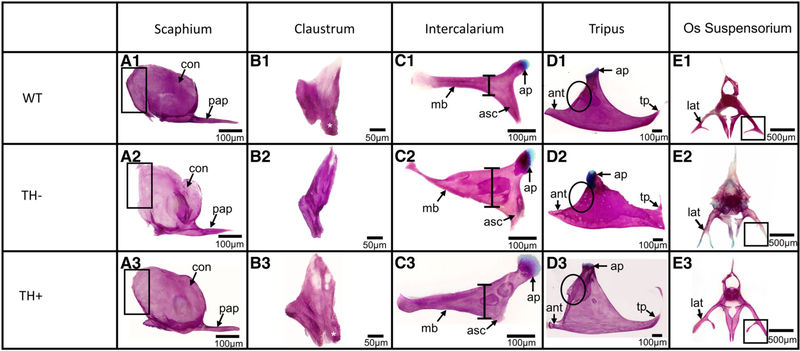Fig. 3.
Cleared and stained Weberian ossicles from WT, TH−, and TH+ zebrafish. The order of the images (A-E) of the Weberian ossicles match their anterior to posterior position within the zebrafish. (A1–3) Scaphium. Note the lack of a properly ossified anterior edge to the concha of the scaphium in TH−. (B1–3) Claustrum. Asterisks indicate the presence of a posterior leg of the claustrum, present in WT and TH+, but absent in TH−. (C1–3) Intercalarium. Bars indicate the widest point of the intercalarium’s manubrium. In TH− and TH+, it is enlarged, but the distal end of the manubrium is smaller in TH−. Asterisks mark the ascending process. Note that this process is larger in both TH− and TH+ than in WT but does not extend as far as in WT. (D1–3) Tripus. Arrows indicate the transformator process. Note the oddly shaped transformator process in TH− and the lengthened transformator process in TH+. Note the lack of proper definition of the anterior process in TH− and TH+ (black circles). (E1–3) Os suspensoria. Arrows indicate the lateral arm of the os suspensorium. Note both the underossification in TH− and increased size in TH+.

